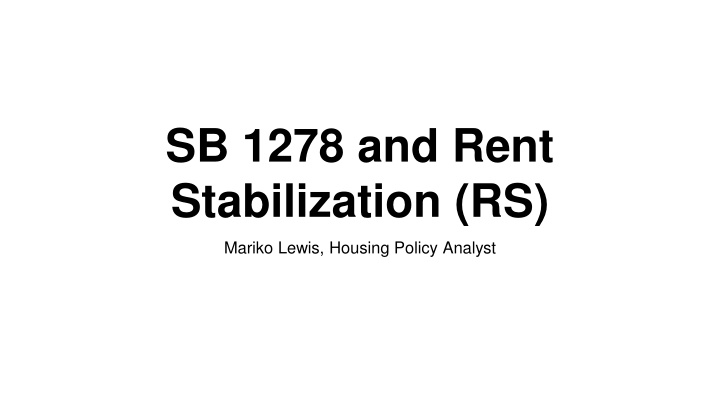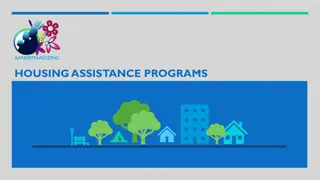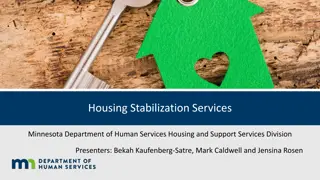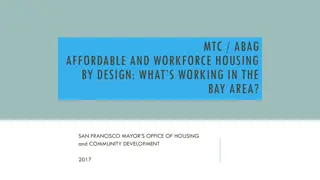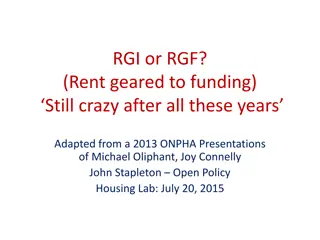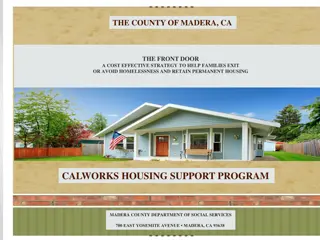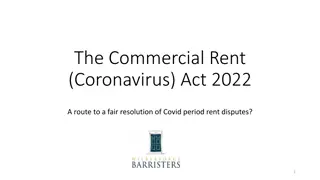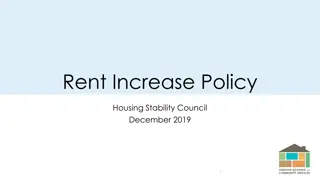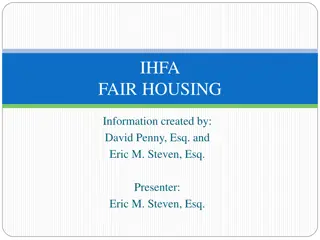Overview of Rent Stabilization in Housing Policy
Rent stabilization is a system regulating annual rent increases, aiming to stabilize rents, protect tenants, and address housing instability. This system, with key components outlined in SB 1278, has a history linked to wartime rent control and has seen a resurgence in various cities and states. Tenant protections under rent stabilization include moderating rent appreciation, promoting housing stability, and reducing the cost burden for renters.
Download Presentation

Please find below an Image/Link to download the presentation.
The content on the website is provided AS IS for your information and personal use only. It may not be sold, licensed, or shared on other websites without obtaining consent from the author.If you encounter any issues during the download, it is possible that the publisher has removed the file from their server.
You are allowed to download the files provided on this website for personal or commercial use, subject to the condition that they are used lawfully. All files are the property of their respective owners.
The content on the website is provided AS IS for your information and personal use only. It may not be sold, licensed, or shared on other websites without obtaining consent from the author.
E N D
Presentation Transcript
SB 1278 and Rent Stabilization (RS) Mariko Lewis, Housing Policy Analyst
SB 1278 Inception: Constituent Housing Instability and Rising Rents Average area rent increases from Q1 2020 - Q1 2022 https://www.washingtonpost.com/business/interactive/2022/rising-rent-prices/
Average Annual Rent Increases Have Tripled in Some Virginia Cities from 2020-2021
What is rent stabilization? + SB 1278 Key Components Rent Stabilization Key Components Rent stabilization is a system of regulating the amount that rent can increase year-over year Typically rent stabilization regulates rent through percentage increases Local Option Bill Maximum rent increases: tied to consumer price index (CPI) Exemptions New construction (15 years) Mom-and-pop landlords Landlords unable to make ends meet (by application)
Rent Stabilization History Backlash against rent regulation led by real estate industry some states repeal or preempt RS Rent regulation in the U.S. originated through emergency rent control (NYC, DC) Rent control largely disappeared after WWII Now 1970s WWII WWI 1990s 1950s Rapid increase in rents have led to a resurgence in rent stabilization, with several cities and states successfully implementing RS (OR, CA) Rent regulation re-emerged in the form of rent stabilization (Boston, DC, LA, SF, etc) Federal rent control implemented to prevent wartime rent gouging
Rent Stabilization in Cities and States Today Statewide: Oregon (2019), California (2020) Approximately 200 localities within: Maryland, New Jersey, California, Maine, New York, Washington D.C., Minnesota (May 1, 2022)
Rent Stabilization: Tenant Protections RS stabilizes rents, moderates extreme rent appreciation San Francisco (2019), Massachusetts (2007), Massachusetts (2014) RS promotes housing stability by increasing tenant tenure length San Francisco (2019), Berkeley (2011), Massachusetts (2007), Santa Monica (1990), New York City (1989) RS reduces cost burden Boston (2003): After RS repeal in 1994 (by a 51-49 vote margin), rents nearly doubled in 8 years; from 1990 to 2000, the number of cost burdened households increased by 30% RS prevents displacement and promotes racial diversity within neighborhoods San Francisco (2019)
Rent Stabilization: Effect on Housing Conditions Little evidence that shows rent regulations cause a reduction in housing quality Some evidence shows that major capital improvements keep pace, but more aesthetic upkeep may suffer Capital improvement provisions within many rent stabilization policies aid landlords in making repairs Some evidence shows housing quality could improve under RS Washington D.C. (1990): Of 3,600 renters surveyed, 80 percent said that building maintenance was as good or better than it had been in the absence of rent stabilization; low- income renters, especially, said rent regulation made them more willing to insist on repairs 20% of rent stabilized units had deficient conditions vs. 26% of non-stabilized units
Rent Stabilization: Effect on Supply Little evidence showing that rent stabilization negatively impacts new construction Market conditions and zoning have far more influence on housing supply than the presence or absence of rent stabilization Some studies that do make claims on the effect that RS has on supply: New Jersey (2007): RS can increase the supply of rental housing by incentivizing landlords to subdivide larger rental units or build more units San Francisco (2018): RS had no effect on housing supply overall, but did have a negative effect on supply of rental housing by encouraging condo conversions after 1990 law San Francisco (2016): The three largest Bay Area cities with RS (San Francisco, San Jose, and Oakland) have only 27% of the region s housing but have built 43% of the Bay Area s new multifamily rental units in buildings with five or more units from 2000-2016
Conclusion RS has been proven to limit rent increases, promote housing affordability, and prevent tenant displacement There are many different ways to implement RS, and various provisions that can be added or taken away to make RS a good fit for that locality Maximum rent increase rate, rent increase exceptions, building exemptions, enforcement Most RS studies are done using local level analysis, so there can be variation in the some of the findings of those studies RS is an essential piece of the housing affordability puzzle, but is not the cure-all for housing affordability; other policy steps should also be taken to promote housing affordability in Virginia
SB 1278 and Rent Stabilization (RS) Mariko Lewis, Housing Policy Analyst
